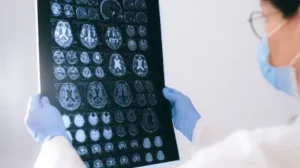Altered “Neuronal Avalanches” in Brains of Epilepsy Patients Tied to Cognitive Performance
March 15, 2023
Article published by Human Brain Project
New research by the Human Brain Project has found that in the brains of patients with epilepsy, changes in large scale neuronal activations can be detected in the brain’s resting state activity, even when no seizure is ongoing. The non-invasive approach could lead to a new method to aid epilepsy diagnostics.
Diagnosing epilepsy can be problematic for patients, who sometimes have to wear helmets and electrodes for prolonged periods of time waiting for an epileptic episode to happen, so that the clinicians can document it with EEG. Alternatively, the seizure is artificially induced, causing discomfort.
The new findings stem from a collaboration between the Institut de Neurosciences des Systèmes (France), the IRCCS E.Medea – La Nostra Famiglia (Italy) and the Department of General Psychology of Padua University (Italy). Published in the journal Epilepsia, the study has compared high density electroencephalograms (EEG) of 37 patients with temporal lobe epilepsy with healthy controls.
While the brain is at rest, spontaneous waves of neuronal activation are constantly generated. Their function is not fully understood, but they seem to play an important part in brain functionality. The researchers demonstrated that even during resting state it is possible to detect an alteration of the propagation patterns of so-called large-scale “neuronal avalanches”, suggesting a potential diagnostic application in epilepsy. These neuronal avalanches are triggered by the spontaneous activation of a group of neurons that then spread across large areas of the brain, in a cascade effect.




